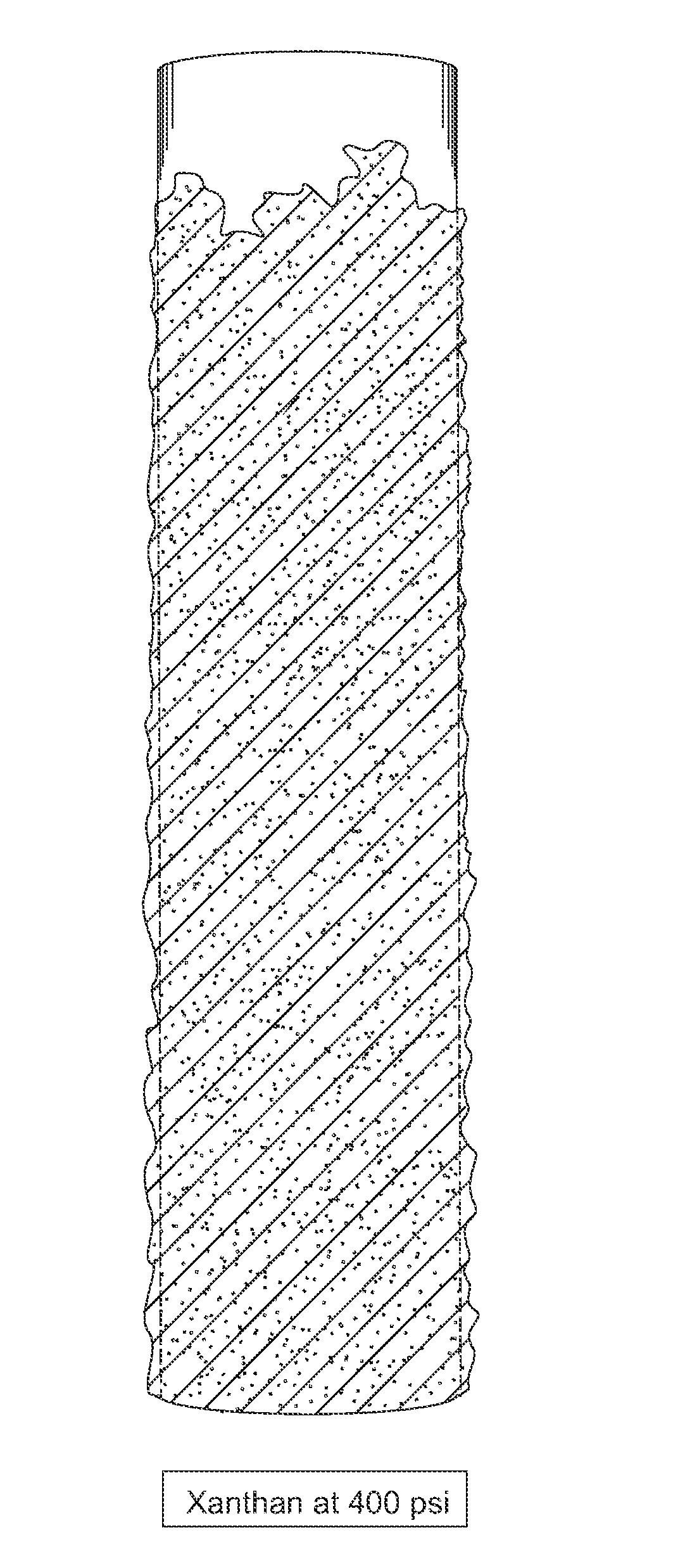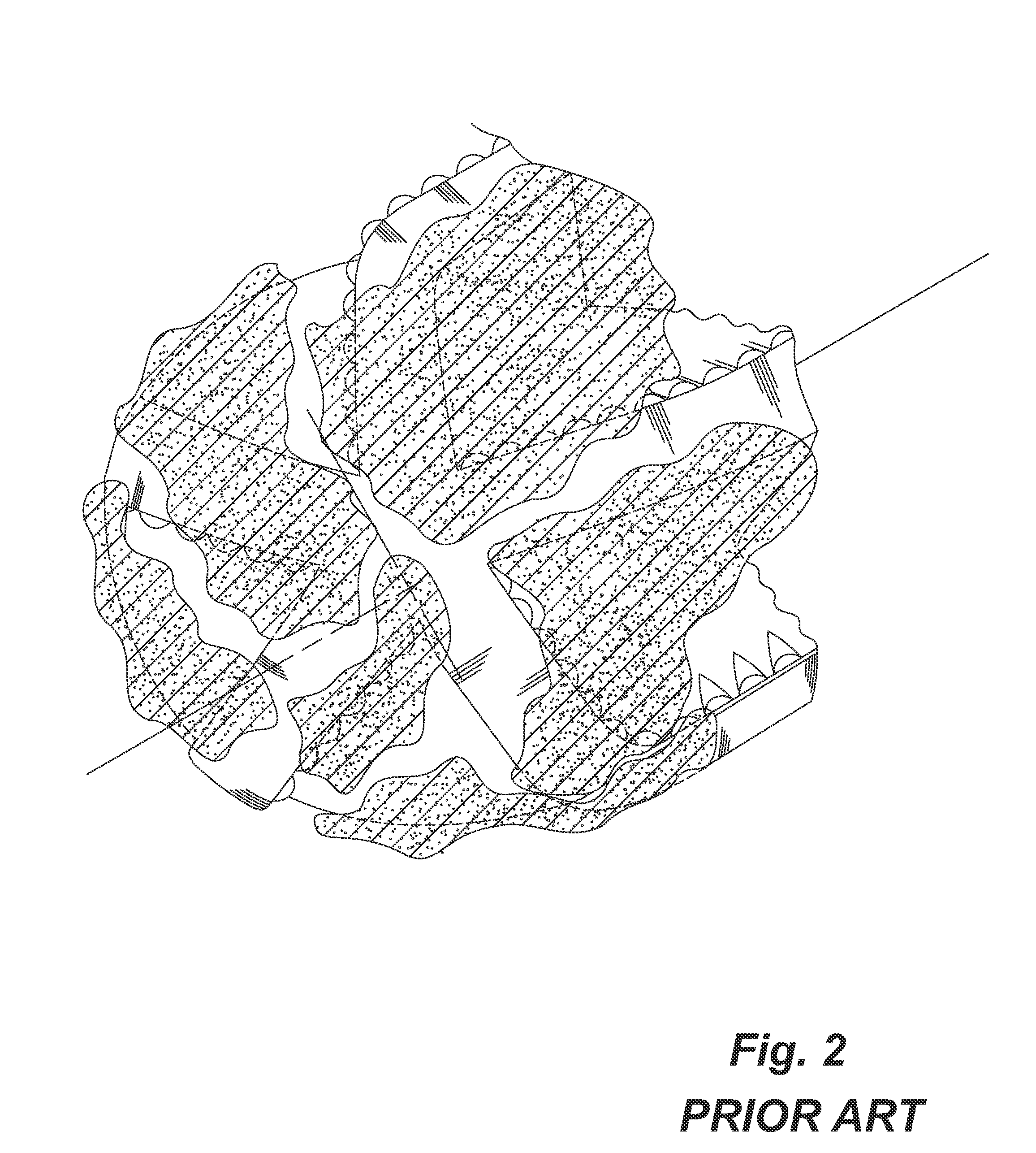Bitumen Anti-accretion additive
a technology of additives and additives, applied in the field of additives, can solve the problems of affecting the penetration rate (rop), significant delay in drilling operation, delay, etc., and achieve the effect of minimizing the retention of bitumen
- Summary
- Abstract
- Description
- Claims
- Application Information
AI Technical Summary
Benefits of technology
Problems solved by technology
Method used
Image
Examples
example 1
Effect of Pressure
[0106]Testing was performed to assess the effect of pressure on the test results to simulate pressure conditions of the fluid when circulated down-hole. A minimal amount of Xanthan, a conventional viscosifier, was added to the brine matrix, with and without the further addition of anti-accretion additive BMP-1.
TABLE BResultsAmbient Pressure400 psi Pressure2 kg / m3 XanthanBitumen sticking toBitumen stickingbar and cell.to bar and cell.2 kg / m3 Xanthan + 2 L / m3Bar and cell cleanBar and cell cleanBMP-1
Conclusions:
[0107]As seen in the results in Table B and in FIG. 3, some accretion or sticking of bitumen to the steel bar is observed at ambient pressure without the addition of BMP-1. As shown in FIG. 4, when elevated pressure (400 psi) equivalent to that of the hydrostatic pressure in a true vertical depth of approximately 300 m is applied to the OFITE cell, severe accretion occurs in the brine without the addition of BMP-1. The steel bar is substantially coated with bit...
example 2
Effect of Other Drilling Fluid Additives
[0109]Various drilling fluid additives are typically added to conventional drilling fluid systems. Thus, testing was performed adding a variety of common conventional additives to a brine base fluid to determine whether negative interactions were observed between the additives and the anti-accretion additive BMP-1 and whether there was any negative effect of the ability of the anti-accretion additive to prevent sticking.
[0110]The following additives are commonly used in the oil industry to formulate a drilling fluid:
[0111]1. Xanthan Gum (Viscosifier)
[0112]2. Polyanionic Cellulose [PAC] (Fluid Loss Additive)
[0113]3. Aminodrill* NPH (Clay Control) (* available from ICTC)
[0114]Each additive was mixed individually and in combination with BMP-1 and was rolled with the steel bar in the OFITE aging cell at 400 psi.
[0115]The steel bar was observed following rolling to determine any adverse effects in the presence of the anti-accretion additive.
TABLE C...
example 3
Effect of Drilled Solids
[0118]During a drilling operation, it is expected that the drilling fluid would be exposed to formations that not only contain bitumen, but also to formations that contain swellable clay, such as in the Clearwater formation in Cold Lake Alberta, Canada.
[0119]For the purposes of the testing, the drilling fluid containing brine, some conventional additives and BMP-1 as the anti-accretion additive was contaminated with 30 kg / m3 Wyoming bentonite, a highly swellable clay similar to the clays found in the Clearwater formation, prior to rolling in the OFITE aging cell at 400 psi.
TABLE DResultsFormulationObservation3 kg / m3 Xanthan + 2 L / m3 BMP-1 + 2 kg / m3 PAC + 5Bar and cellL / m3 Aminodrill NPH + 30 kg / m3 Wyoming Bentoniteclean
Conclusions:
[0120]Despite the addition of highly swellable clay, BMP-1 effectively prevented sticking of the bitumen to the OFITE cell or steel bar therein.
PUM
| Property | Measurement | Unit |
|---|---|---|
| Fraction | aaaaa | aaaaa |
| Volume | aaaaa | aaaaa |
| Fraction | aaaaa | aaaaa |
Abstract
Description
Claims
Application Information
 Login to View More
Login to View More - R&D
- Intellectual Property
- Life Sciences
- Materials
- Tech Scout
- Unparalleled Data Quality
- Higher Quality Content
- 60% Fewer Hallucinations
Browse by: Latest US Patents, China's latest patents, Technical Efficacy Thesaurus, Application Domain, Technology Topic, Popular Technical Reports.
© 2025 PatSnap. All rights reserved.Legal|Privacy policy|Modern Slavery Act Transparency Statement|Sitemap|About US| Contact US: help@patsnap.com



